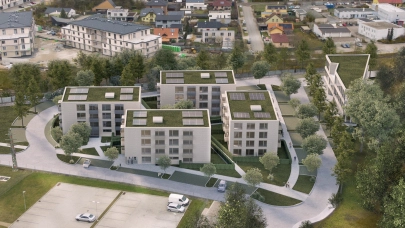
The growth in new European shopping centre space has started to slow, as mature European markets begin to reach the peak of space required, according to the latest research from Cushman & Wakefield.
Key findings:
- 1.0 million square metres of new shopping centre space was delivered in H1 2018, a 10% decline on H1 2017.
- Europe overall sees an 11% year-on-year fall in the amount of space under construction in H1 2018, with a 25% year-on-year fall in Western Europe.
- Shopping centre floorspace in Europe totalled 166.2 million sqm in H1 2018.
- One-third of Europe’s shopping centre space was originally built over 20 years ago.
Over the last two decades, Europe has seen an average of 5.4 million square metres (sqm) of new shopping centre space built every year, but an annual average of just 3.5 million sqm of new space is scheduled to be completed in 2018 and 2019. Established retail markets and a shift toward online shopping have reduced the need for new space across Europe.
Although the need for new shopping centres is falling, ageing stock in the most mature markets presents a significant opportunity for redevelopment. One-third of Europe’s shopping centre space was originally built more than 20 years ago.
In the first six months of 2018 Western Europe saw 373,000 sqm of new space created, an 8.2% year-on-year (y-o-y) rise, taking the total space available to 108.8 million sqm. However, in H2 2018 and 2019 the region is expected to see just 2.1 million sqm of new space created, a fall of 25% y-o-y. Meanwhile, in the less mature Central and Eastern European (CEE) market, 676,000 sqm of space was created, an 18% fall y-o-y, taking the total to 57.4 million sqm of space. In H2 2018 and 2019 the region is expected to see the creation of 4.0 million sqm of space – a 2.4% y-on-y fall.
Silvia Jodlowski, Senior Research Analyst at Cushman & Wakefield, said: “Changing consumer behaviour and the rise of online shopping is set to have an increasing impact in more mature markets, particularly in Western Europe. In developing shopping centre markets in Central and Eastern Europe the requirement for space is increasingly impacted by macroeconomic trends – particularly in Turkey and Russia, where activity has been lower in H1 2018, which contrasts with Poland where a strong economy is driving growth.”
New developments in CEE
Strong economy, driven by rising wages, low unemployment, still low inflation and strong private consumption, remains to be the key factor impacting the shopping centre development in Poland. In H1 2018, approximately 125,000 sqm of new space was completed and the country holds the third position for development activity in Europe. Development pipeline remains strong, with 444,000 sqm of space currently under construction and expected to open in H2 2018 – 2019. Construction focuses on large and very large schemes being developed in major agglomerations, and smaller projects, retail parks and convenience centres in smaller towns.
Małgorzata Dziubińska, Associate Director, Consulting and Research, Cushman & Wakefield, said: “Given the shopping centre development pipeline scheduled for delivery by year-end 2018, this year’s supply of new schemes is likely to hit the highest volume in the last three years. With its strong economy, driven largely by high household consumption expenditures, Poland remains a very attractive market to both investors and leading iconic brands. This is evidenced by entries into the Polish market of such brands as Dealz and Tedi, and the planned opening of Primark’s first Polish store at Galeria Młociny. The first half of 2018 saw five new shopping centre openings, the largest being Forum Gdańsk and Gemini Park Tychy. Of the eleven shopping centres to open in H2 2018, the biggest is Galeria Libero in Katowice. Another confirmation of the market’s strength is a continually falling vacancy rate. At the end of H1 2018, the vacancy rate fell on seven of the country’s eight core retail markets with the average for Poland down from 4% to 3.2%.”
Silvia Jodlowski, Senior Research Analyst at Cushman & Wakefield, added: “Most of Europe has now had over twenty years of continuous shopping centre development – much more in the case of established markets such as the UK, France and Germany. Arguably, most European shopping centre markets are at or near maturity, with net new additions to space likely to slow considerably. As a result, development will focus increasingly on the revitalisation and renewal of existing space, as a growing number of older schemes become obsolete. In fact, over one-third of Europe’s shopping centre space is now over twenty years old and, while much of this space has been refurbished and remodelled over time, equally much of it is ripe for redevelopment.”



